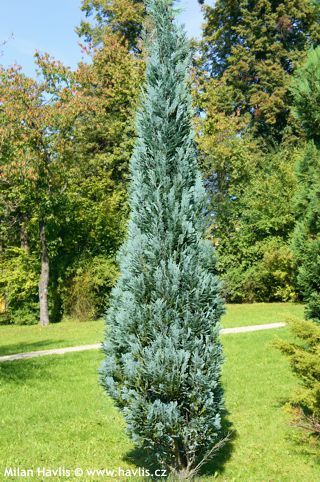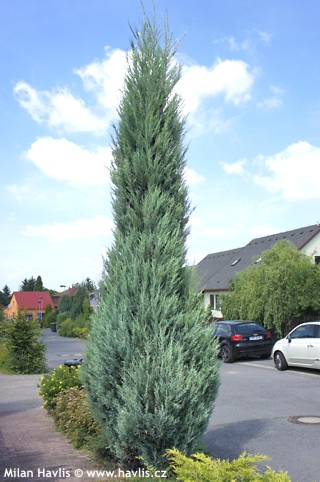Chamaecyparis lawsoniana 'PELT'S BLUE' Lawson cypress


Chamaecyparis
Lawson cypress is native to northwestern America, from Oregon to northern California. It was first discovered by European Americans near Port Orford, Oregon, and was introduced to horticultural market in 1854. It was described by the Scottish botanist Andrew Murray (1812-1878) and named after another Scottish botanist and merchant, Charles Lawson (1795-1873), who became famous by importing new plant species from America to Britain. This cypress tree was one of his discoveries. It is a hardy, evergreen conifer with soft, scale-like needles. Perhaps all over the world in temperate climates, it is widely planted in gardens and parks and is popular for its variability. There are many colourful varieties that brighten up compositions of dark green shrubs and trees and perform also in decorative outdoor containers.
Pelt's Blue, or Van Pelt's Blue is a German selection of Lawson cypress bred by Hinrich Kordes Nursery and introduced in 1984. It is an improved version of a very successful variety Columnaris (Glauca) with equal habit and growing requirements, but a more prominent blue shade. In summer its scale-like needles are blue-green, and in winter, when chlorophyll has hidden in the roots, its needles shine with cool, steel blue tones. It grows moderately into a dense, narrowly pyramidal or columnar, dense shrub with a slender tip. It requires no care or pruning but can be pruned in early spring or shaped/sheared in midsummer. Don't cut into old wood.
False cypress prefers moist but well-drained, slightly acidic soil but is adaptable to almost all types of soil. It can be pruned, sheared or shaped from spring to autumn. Grow it in full sun or half shade either in a garden bed or in a large container where moisture has to be regularly checked but remove the saucer (it require more frequent watering than e.g. pine tree). Fully hardy to min. -29°C (USDA zone 5).
Last update 26-02-2019

































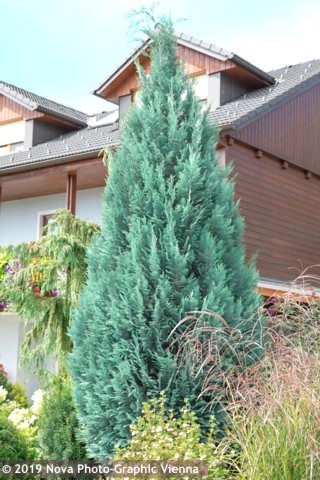
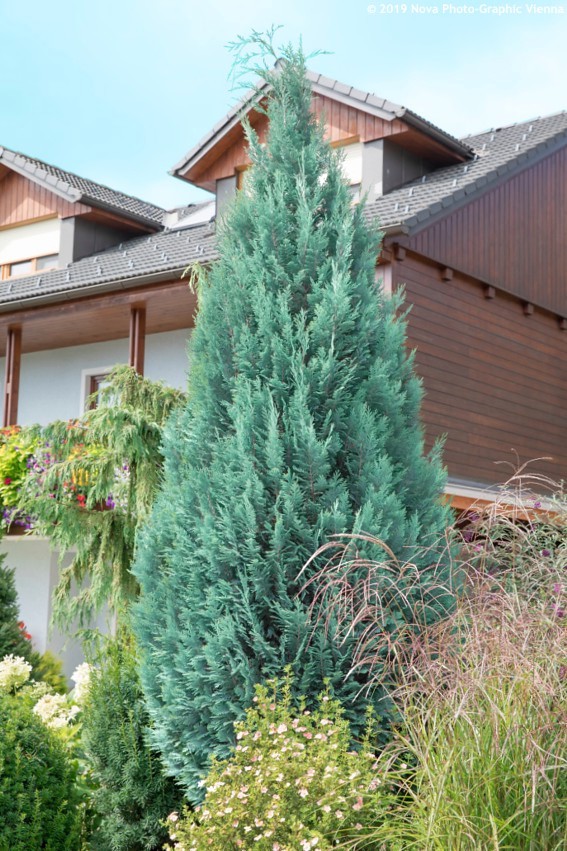
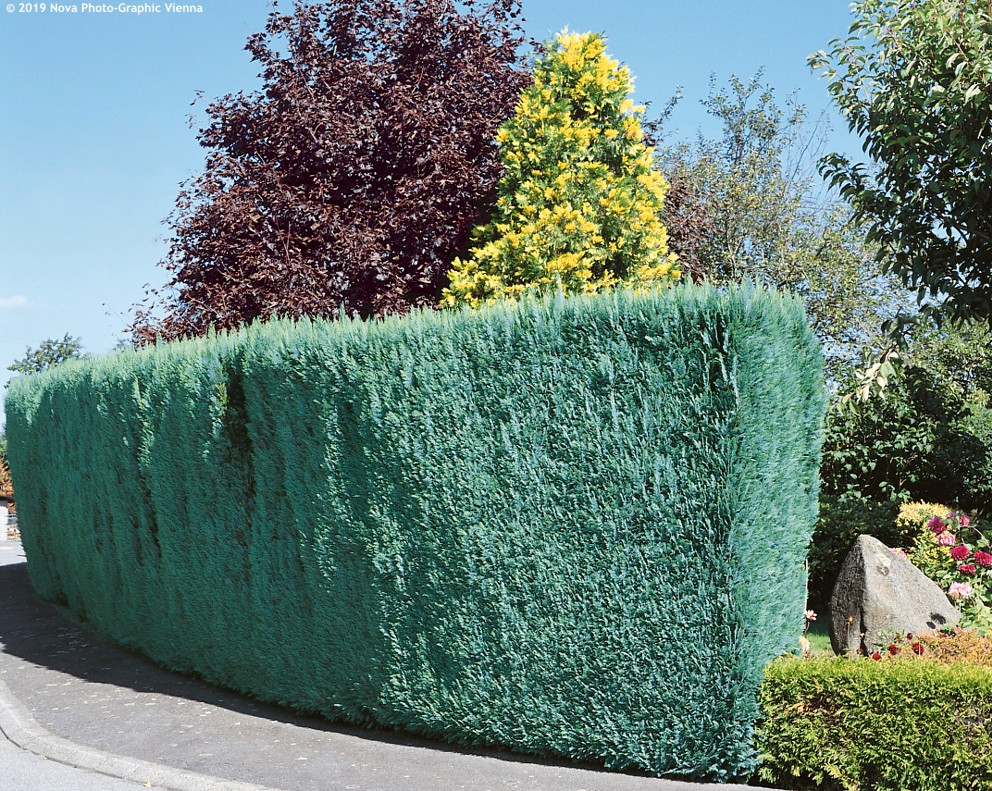
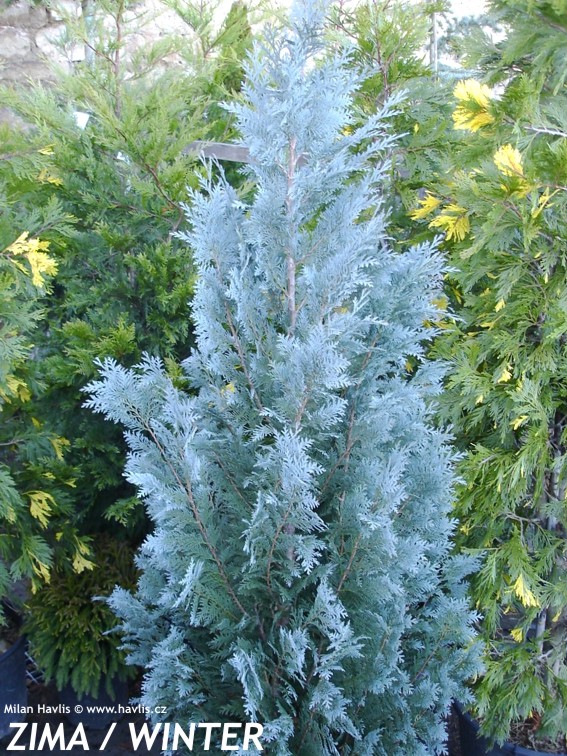

.jpg)
